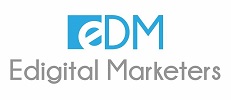So you’re a digital marketer looking to up your game and maximize your online presence? Well, look no further because we’ve got just the tool to help you stay organized and plan your content effectively. In this article, we’ll be delving into the world of content calendars and why they’re a must-have for any digital marketer. From boosting your productivity to improving collaboration with your team, a content calendar can be a game-changer in your marketing strategy. So let’s dive in and discover the steps to creating an effective content calendar that will keep you on track and help you drive results.

Why You Need a Content Calendar
Benefits of having a content calendar
A content calendar is a tool that helps you plan and organize your content creation efforts. It provides structure and guidance, allowing you to streamline your content marketing process and stay on track. There are several benefits to having a content calendar:
-
Improved organization: A content calendar helps you keep track of all your content ideas, topics, and deadlines in one place. This makes it easier to stay organized and ensures that you never miss a deadline or forget an important piece of content.
-
Increased productivity: With a content calendar, you can plan your content in advance, which saves time and reduces stress. You can schedule your content creation tasks and allocate resources more efficiently, leading to increased productivity and better time management.
-
Better consistency: Consistency is key in content marketing. A content calendar allows you to plan and schedule your content in a structured manner, ensuring that you consistently deliver high-quality content to your audience. This helps build trust and loyalty with your target audience.
-
Enhanced collaboration: A content calendar provides a centralized platform for collaboration between team members and stakeholders. It allows everyone involved in the content creation process to have visibility and contribute to the planning and execution of content.
Impact on productivity and organization
Having a content calendar has a significant impact on your productivity and organization. Without a clear plan in place, it’s easy to get overwhelmed and lose track of your content creation efforts. A content calendar helps you:
-
Stay organized: With a content calendar, you can keep all your content ideas, topics, and deadlines in one place. This allows you to easily visualize your content strategy and stay organized throughout the content creation process.
-
Plan ahead: A content calendar allows you to plan your content in advance. You can map out your content topics, set deadlines, and allocate resources accordingly. This not only helps you stay on track but also improves your overall productivity by eliminating the need for last-minute content creation.
-
Avoid duplication: A content calendar helps you avoid creating duplicate or similar content. By seeing your content topics and publication dates in a calendar format, you can easily identify any overlap and make necessary adjustments to ensure a diverse and varied content offering.
-
Optimize resources: With a content calendar, you can allocate resources more effectively. You can plan your content creation tasks, assign responsibilities, and manage workload distribution. This leads to better resource utilization and improved efficiency in content production.
Ensures consistency in content creation
Consistency is a crucial factor in the success of any content marketing strategy. Without a content calendar, it’s easy to become inconsistent in your content creation efforts. A content calendar helps you ensure consistency by:
-
Having a structured plan: A content calendar provides a structured plan for your content creation. By mapping out your content topics, formats, and publication dates, you can create a cohesive content strategy that aligns with your goals and objectives.
-
Setting deadlines: Deadlines are essential for maintaining consistency. A content calendar allows you to set realistic deadlines for each piece of content, ensuring that you have a regular cadence of content publication. This helps you stay on track and avoids long gaps between content releases.
-
Tracking progress: With a content calendar, you can easily track your progress and identify any gaps or delays in your content creation process. This allows you to take necessary actions to maintain consistency and meet your content goals.
-
Building audience trust: Consistency in content creation helps build trust and credibility with your audience. When your audience knows they can rely on you for regular and valuable content, they are more likely to engage with your brand and become loyal customers.

Determining Your Content Goals
Defining your target audience
Before you start creating content, it’s essential to define your target audience. Understanding who your audience is will help you tailor your content to their specific needs and preferences. To define your target audience, consider the following:
-
Demographics: Start by identifying the basic demographic information of your target audience, such as age, gender, location, and income level. This will give you a general idea of who you’re targeting.
-
Psychographics: Dive deeper into your target audience’s psychographics, which include their interests, values, attitudes, and lifestyle choices. This information will help you understand their motivations and how to connect with them on a deeper level.
-
Behaviors: Analyze your target audience’s online behaviors, such as their preferred social media platforms, websites they visit, and content consumption habits. This will help you determine where to distribute your content and how to reach them effectively.
-
Needs and pain points: Identify the needs, challenges, and pain points of your target audience. This will help you create content that provides solutions and addresses their specific concerns.
Identifying content objectives and key messages
Once you have a clear understanding of your target audience, it’s time to identify your content objectives and key messages. Content objectives define what you want to achieve through your content, while key messages convey the main points and themes of your content. Consider the following when identifying your content objectives and key messages:
-
Brand awareness: If your objective is to increase brand awareness, your key messages should focus on introducing your brand, highlighting its unique value proposition, and showcasing your expertise in the industry.
-
Thought leadership: If your objective is to establish thought leadership, your key messages should emphasize your expertise, provide valuable insights and industry knowledge, and position your brand as a go-to resource in your niche.
-
Lead generation: If your objective is to generate leads, your key messages should focus on offering valuable content resources in exchange for contact information, highlighting the benefits of your products or services, and addressing your target audience’s pain points.
-
Customer engagement: If your objective is to engage your audience, your key messages should aim to spark conversations, encourage interaction, and provide entertaining or informative content that resonates with your target audience.
Setting measurable goals
To ensure that your content efforts are effective, it’s essential to set measurable goals. Measurable goals allow you to track your progress and evaluate the success of your content marketing efforts. When setting your goals, make sure they are SMART:
-
Specific: Clearly define what you want to achieve with your content marketing efforts. For example, instead of setting a vague goal like “increase website traffic,” be specific, such as “increase organic website traffic by 20% over the next three months.”
-
Measurable: Make sure your goals are quantifiable, so you can track your progress and measure success. This could include metrics like website traffic, social media engagement, lead generation, or conversion rates.
-
Achievable: Set goals that are realistic and attainable based on your available resources and capabilities. Stretch yourself, but also be mindful of what is feasible within your constraints.
-
Relevant: Ensure that your goals align with your overall business objectives and marketing goals. It’s important to create content that directly supports your overall business strategy.
-
Time-bound: Set a timeframe for achieving your goals. This will help you stay focused and committed to your content creation efforts.



